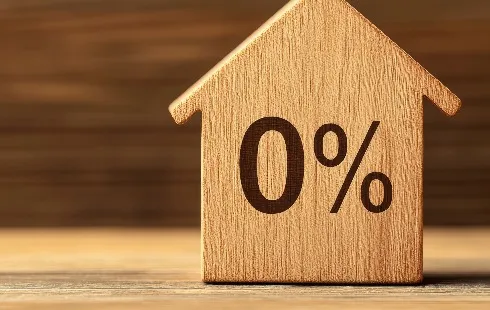
Crypto Investment Entry and Exit Strategies of Institutional Investors
Section: Business
 As Germany grapples with a complex and dynamic real estate market, prospective homebuyers are left to ponder a pressing question: How much will it cost to buy an apartment in Germany by 2035? The future of housing prices is shaped by a confluence of factors, including economic conditions, demographic shifts, government policies, and environmental considerations. Current trends suggest a mixture of price declines in certain areas and record valuations in others, painting a multifaceted picture for the future.
As Germany grapples with a complex and dynamic real estate market, prospective homebuyers are left to ponder a pressing question: How much will it cost to buy an apartment in Germany by 2035? The future of housing prices is shaped by a confluence of factors, including economic conditions, demographic shifts, government policies, and environmental considerations. Current trends suggest a mixture of price declines in certain areas and record valuations in others, painting a multifaceted picture for the future.
As of 2024, Germany's real estate market exhibits significant regional disparities. Cities like Berlin, Munich, and Hamburg continue to experience high demand and rising prices, driven by population growth, robust economies, and limited housing supply. In contrast, some rural areas and smaller towns are witnessing stagnation or even declines in property values, affected by demographic shifts such as aging populations and urban migration.
The Bundesbank has noted that the German housing market, particularly in urban centers, has been characterized by significant overvaluation. This has raised concerns about a potential bubble, though thus far, prices have largely resisted a severe correction. Interest rates, which have been historically low, are beginning to rise, potentially cooling off the housing market and stabilizing or even reducing prices in the short term.
Germany's population dynamics will play a crucial role in shaping the real estate market by 2035. The country faces a declining birth rate and an aging population, leading to a projected population decrease by mid-century. This demographic shift is likely to reduce demand for housing in certain regions, particularly those that younger people are leaving.
However, immigration could counterbalance this trend, particularly in major cities and economically vibrant areas. Germany remains a key destination for immigrants, driven by its strong economy and political stability. If the country continues to attract a significant number of immigrants, demand for housing in urban areas could sustain or even increase.
Technological advancements and environmental policies will also influence housing prices. The push towards sustainable and energy-efficient buildings is likely to increase construction costs, but also add value to properties in the long term. Smart home technologies and innovations in construction methods, such as modular and 3D-printed homes, could lower costs and change the market dynamics.
Furthermore, Germany's commitment to environmental sustainability and carbon neutrality by 2045 will impact the real estate market. Properties that adhere to stringent environmental standards are expected to command premium prices, while older, less efficient buildings may see a decline in value.
Government policies will be pivotal in shaping the housing market over the next decade. The German government has already implemented measures to control rent prices and increase housing supply, particularly in urban areas. These policies include rent caps, subsidies for new constructions, and incentives for converting commercial properties into residential units.
Additionally, the European Central Bank's monetary policies will influence mortgage rates and borrowing costs. As interest rates rise to counter inflation, higher borrowing costs could temper housing demand, particularly among first-time buyers and investors. This could lead to a more balanced market with moderate price growth.
Predicting exact prices for 2035 is challenging due to the myriad of influencing factors. However, several scenarios can be considered. In a scenario where Germany experiences moderate economic growth, continued immigration, and effective government policies, urban areas might see annual price increases of 2-3%. This would result in a substantial increase over the next decade but at a sustainable pace.
Conversely, if economic conditions worsen or population decline accelerates, prices in some regions could stagnate or fall. Rural and economically weaker regions are more vulnerable to price drops, potentially seeing declines of up to 1-2% per year.
By 2035, the cost of buying an apartment in Germany will likely vary significantly across regions. Urban centers, buoyed by strong economies and continuous demand, are expected to maintain or increase their high valuations, albeit at a potentially slower pace due to rising interest rates and demographic changes. Rural and economically weaker areas may face price declines, driven by depopulation and economic stagnation.
Prospective buyers and investors should closely monitor these trends, considering both regional dynamics and broader economic indicators. While the overall market outlook remains uncertain, strategic investments in well-located, sustainable properties are likely to yield positive returns in the long run.
Image by Satheesh Sankaran from Pixabay

Section: Business

Section: Arts

Section: Arts

Section: Business

Section: Business

Section: Arts

Section: Health

Section: Arts

Section: News

Section: News
Health Insurance in Germany is compulsory and sometimes complicated, not to mention expensive. As an expat, you are required to navigate this landscape within weeks of arriving, so check our FAQ on PKV. For our guide on resources and access to agents who can give you a competitive quote, try our PKV Cost comparison tool.
Germany is famous for its medical expertise and extensive number of hospitals and clinics. See this comprehensive directory of hospitals and clinics across the country, complete with links to their websites, addresses, contact info, and specializations/services.
One of the most beautiful squares transforms into a summer stage every year for two days. The Gärtnerplatz Open-Air features a free music and cultural program across three stages, as well as street food from local vendors. On Saturday, the main stage at Gärtnerplatz offers something for everyone,...



No comments yet. Be the first to comment!